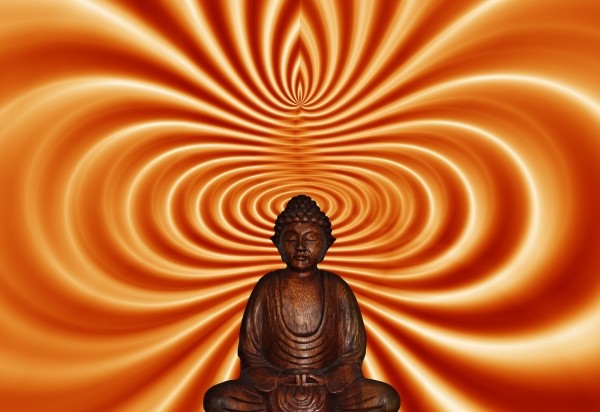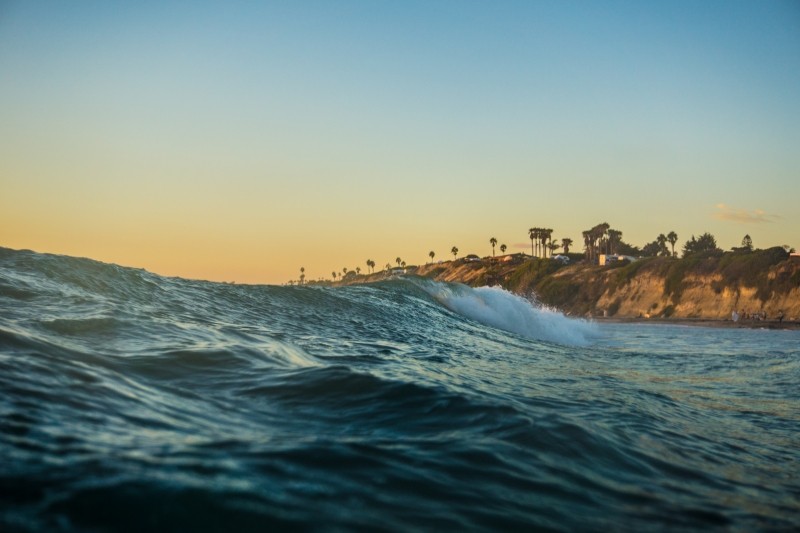Have you ever felt tension in your chest when you feel stressed? Or those short-lived moments of intense panic and fear? Maybe breathing or concentrating seems impossible? Many of us can likely relate to these questions and we call this experience anxiety. Some might think that only a select few of us have to deal with anxiety when in fact it is something all of us experience, to some degree, at some point in our lives. Anxiety is an emotion characterized by feelings of tension and worried thoughts. It is accompanied by physical symptoms such as sweating, trembling, or increased heart rate [1]. Popular convention suggests that anxiety is just a mental disorder when it is actually part of the body’s natural response to anticipation of future threats. In fact, some arousal (anxiety) is actually helpful for increasing productivity levels. The Yerkes-Dodson Law suggests that there is an empirical relationship between stress and performance. Moderate levels of stress can help you concentrate and focus on a given task. However, extreme levels of anxiety can interrupt your concentration and interfere with your performance. Anxiety culminates into anxiety disorder when feelings of tension and worry become too excessive and hard to control, causes significant distress or impairment, and occurs more often than not for at least six months [2]. The chart below shows that performance level is strong when stress is moderate and hindered when stress is too low or too high. It’s important to understand anxiety affects each person differently and symptoms can vary. Anxiety disorders are the most common mental disorder and affects approximately 30% of adults at some point in their lives [3]. The type of anxiety disorder can vary and range from generalized anxiety disorder to more specific phobias and panic disorder. Potential causes and symptoms of anxiety disorders include:
A key component of anxiety is your body’s physical response; your heart rate and breathing speeds up and you perspire and feel tense. A state of relaxation is an important step in comprehensive treatment as it will help slow down or manage physical effects. It’s harder to feel anxious if you are already in a calm, relaxed state and it’s easier to calm yourself by practicing regular relaxation techniques. The elements that characterize a state of relaxation include:
The following 6 coping strategies can help slow down your heart rate and breathing pattern to manage your anxiety.
One way you can reach a state of relaxation is by learning how to personally manage your symptoms and cope with the anxiety. Paradoxically, learning to accept your anxiety is an easy way to help you overcome it. Dr. Aaron Beck and colleagues developed a cognitive therapy tool for managing anxiety known as the AWARE method. A W A R E
Meditation exercises produce deep physiological relaxation and feelings of peace and tranquility [5]. It involves an active process of focusing your attention on your breathing to the point where you abandon the constant loop of stress provoking thoughts. For example, think of a time when you were totally absorbed in a sensory experience such as listening to a beautiful piece of music or receiving a massage. You weren’t trying to analyze or manipulate the experience, you were just living it. This is similar to how your psychological posture should be during meditation. credit: https://redd.it/1xsu1a
Visualization practice combines a 4-4-8 breathing pattern with meditation practice. To do so: Use your mind’s eye create a picture of a pleasant scene (your happy place). For example, imagine you are walking on the beach. A cool fresh breeze blowing across your face and through your hair. As you are listening to the sounds of waves, you hear the birds singing across the beach. Just imagine some experience that you personally find relaxing. Focus on the details of the experience (sights, sounds, smells, feelings, etc.) and continue to breathe evenly and deeply. Open your eyes once you’ve reach a calm and relaxed state.
Another technique you can try is the Progressive Muscle Relaxation (PMR) relaxation method that involves tensing muscle groups and releasing them. Contrasting muscle tension with release can be very effective in managing the symptoms of stress, anxiety, and moments of panic/intense anxiety [4]. Begin in sequence and work progressively throughout all major muscle groups, tensing and relaxing them one at a time. It is helpful to practice this technique several times (when not anxious) so you can more easily cue yourself to the relaxed state. TO BEGIN: Sit with your back fairly straight or lie down on a comfortable surface. Try keeping your eyes closed and take a deep breathing in through your nose. Feel free to listen to relaxing music, if desired. As you breathe deeply, focus your attention on your feet. Toes – Curl your toes as tightly as you can and hold for five seconds. Relax. Calves – Flex feet to tighten calves and hold for five seconds. Relax. Thighs – Tighten your thigh muscles by pressing your knees together as tightly as you can for five seconds. Hips and buttocks – Flex your hip and buttock muscles for five seconds. Relax. Stomach – Focus on your belly button, take a deep breath in, release that breath, and tighten stomach muscles. Shoulders – Move your shoulders forward, squeeze chest muscles and hold for five seconds. Relax. Hands – Extend your arms in front of you. Clench your fists tightly for five seconds. Relax. Feel the warmth and calmness in your hands as you release. Upper arms – Bend your elbows. Tense your biceps for five seconds. Relax. Feel the tension leave your arms. Back – Squeeze shoulder blades together and hold for five seconds. Relax. Feel the anxiety and tension leave your body as you relax. Forehead – Wrinkle your forehead; try to make your eyebrows touch your hairline for five seconds. Relax. Eyes and nose – Close your eyes as tightly as you can for five seconds. Relax. Lips, cheeks, and jaw – Tighten your lips, cheeks, and jaw and hold for five seconds. Relax. Feel the warmth and calmness in your face. Focus on any muscles that may still feel tense. Breathe in for three seconds, hold for three seconds, and release for five seconds – releasing any remaining tension. Once you begin to feel relaxed, focus your attention on feeling warm or as if you were on a sunny beach. Let the light and warmth travel throughout your relaxed body. Feel the waves come in and out with your breathing. Stay in this moment. TO END: Slowly become aware and active. Become aware of your feet pressing on the floor, feel your body on the chair. Take five deep breaths with each breath becoming more alert. Wiggle your fingers and your toes [4].
Once you’ve learned to relax your muscle groups using the progressive muscle technique you can begin autogenic relaxation. This method teaches your body to respond to verbal commands so that you can achieve relaxation and reduce anxiety. Once you assume a comfortable position, close your eyes and slowly recite these instructions:
You can also manage your anxiety with this intentional breathing technique. Most people aren’t aware that deep breathing actually makes use of the body’s built-in natural relaxation response, which occurs when we exhale. You can use a deep diaphragmatic breathing technique to reduce your anxiety with deep breathes. This method uses a 3-3-5 breathing pattern: Make sure to breathe slowly and evenly with your mouth closed. Take notice of what you’re feeling throughout your body while exhaling; your muscles might feel warm and begin to feel light or heavy. Try and let yourself enjoy whatever sensations you’re experiencing. Repeat the diaphragmatic breathing exercise until you feel relaxed.
While these techniques are useful for managing symptoms of anxiety, there are proven treatment options that help fight against anxiety disorders such as Psychotherapy attempts to help a patient identify triggers of his/her anxiety and learn cognitive behaviors to help deal with the issues. Pharmacotherapy and diet/exercise management can improve serotonin levels in the brain and stabilize mood – an effective option for treating anxiety symptoms [6]. TMS is a non-invasive, outpatient treatment option that uses a pulsed magnetic field to stimulate function in specific regions of the brain and help treat anxiety. Researchers investigated how effective TMS is as a treatment option for generalized anxiety disorder and the results suggest 84.6% of patients’ anxiety symptoms were in remission [7]. IOPs are useful for providing cognitive behavioral therapy (CBT), Dialectical Behavioral Therapy(DBT), crisis stabilization, and motivational and supportive therapy. IOPs show to be effective through continual support from the group and clinical team as they provide a steady increase in motivation, self-esteem, safety and security, and decrease unwanted behaviors associated with anxiety such as anxiousness and irritability [8]. All of us experience anxiety, and while oftentimes you can manage it, you shouldn’t wait until your symptoms reach a critical stage before seeking professional help. If you think you might be suffering from anxiety and personal strategies aren’t working to manage it, consider consulting a mental health professional. Effective treatment options vary from person to person, so start by talking to a psychiatrist or therapist and learn what works best for you.
[1] Anxiety. (n.d.). Retrieved from American Psychological Association website: http://www.apa.org/topics/anxiety/ [2] Baldwin, D., MA, DM FRCPsych. (2017, May). Generalized anxiety disorder in adults: Epidemiology, pathogenesis, clinical manifestations, course, assessment, and diagnosis (M. B. Stein, MD, MPH & R. Hermann, MD, Eds.). Retrieved from https://www.uptodate.com/contents/generalized-anxiety-disorder-in-adults-epidemiology-pathogenesis-clinical-manifestations-course-assessment-and-diagnosis/print?source=search_result&search=gad&selectedTitle=1~55 [3] Parekh, R., M.D., M.P.H. (Ed.). (2107, January). What are anxiety disorders? Retrieved from https://www.psychiatry.org/patients-families/anxiety-disorders/what-are-anxiety-disorders [4] Christenen, K., MA, (n.d.). A Guide to Progressive Muscle Relaxation. Retrieved from https://urbanbalance.com/guide-progressive-muscle-relaxation/ [5] Wallace, K. (1970). Physiological Effects of Transcendental Meditation. American Association for the Advancement of Science, 167(3926), 1751-1754. http://science.sciencemag.org/content/167/3926/1751 [6] Young, S. N. (2007). How to increase serotonin in the human brain without drugs. Journal of Psychiatry & Neuroscience : JPN, 32(6), 394–399. [7] White, D., & Tavakoli, S. (2015). Repetitive transcranial magnetic stimulation for treatment of major depressive disorder with comorbid generalized anxiety disorder. Annals of Clinical Psychiatry: Official Journal of American Academy of Clinical Psychiatrists, 27(3), 192-206. Retrieved from https://www.ncbi.nlm.nih.gov/pubmed/26247218 [8] Davila, M., MD (Ed.).(n.d.) Adult Mental Health IOP. Retrieved from https://awakeningskc.com/intensive-outpatient-programs/

Possible Causes
Symptoms
Coping strategies for Anxiety
Elements of Relaxation

AWARE Method
Meditation


Visualization

Progressive Muscle Relaxation
Autogenic Relaxation
Diaphragmatic Breathing
Professional Treatment for Anxiety Disorder
References
Blog
July 5, 2017 0
AWARE Method
Mediation
Visualization
Progressive Muscle Relaxation
Autogenic Relaxation
Diaphragmatic Breathing
For Life-Threatening Emergencies Call 911



